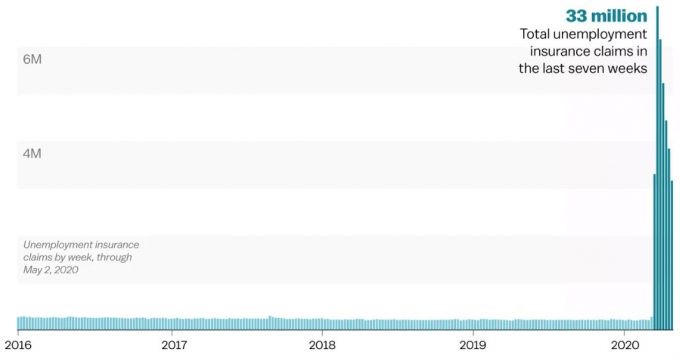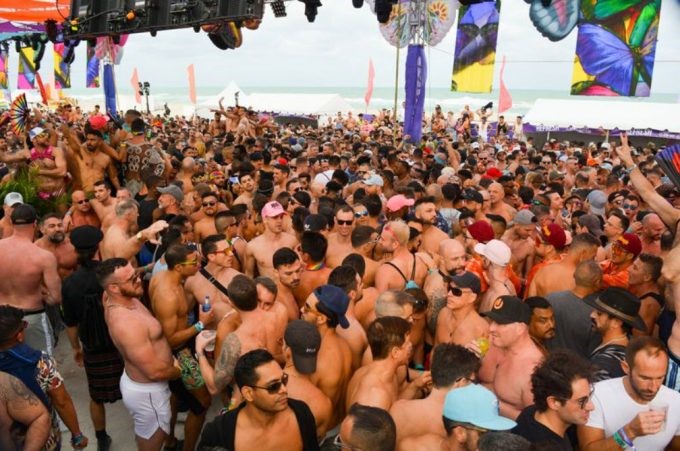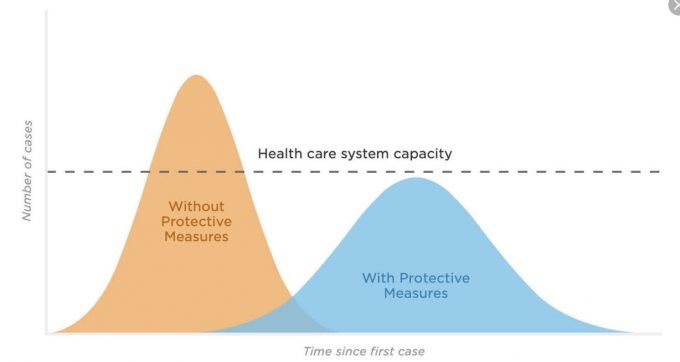In the first two installments of his white paper, Al Brooks talked about the underlying math behind the Coronavirus pandemic and our unique inability to address it, here we look for solutions.
In the first installment of this Coronavirus analysis, Al Brooks established his credentials and tied the outcome of how we handle the crisis to the economy and markets, in the second installment, he explained why we have handled it so badly.
Our choices are reasonable but not the best, we are now being reasonable, but we are not making the best choice.
I want to emphasize that I think what we now are doing is rational and reasonable. But what we did for the January through March was ignorant. That greatly amplified the cost in dollars and lives.
When I say reasonable, it is, but I would instead have us sacrifice for six weeks and rid the country of the virus. However, I respect the people who feel otherwise, and they are making a reasonable decision.
I don’t think it matters too much what we do at this point. The damage is already done and there is no leadership to do otherwise. The stock market is telling us that what we are doing now is fine.
Besides, too many Americans are bored with the whole thing and prefer to let the virus do whatever it’s going to do. They have concluded that the risk of another New York is small. Many are now no longer willing to let the virus control their lives. That is understandable.
Why has the U.S. handled Covid Worse than Most Countries?
Because we’re stupid. Also, we have ignorant people running our government. And finally, the way our government is designed incentivizes focusing on the short-term in general, reelection specifically, at the expense of all else.
Both parties are at fault. Why didn’t every Democrat constantly scream about this every day on TV in February and March? Because they, like the Republicans, are more interested in the November election than the lives and economic well-being of the people. It is simply easier to do nothing other than tell people to be careful.
U.S. Department of Labor chart showing historic job loss (see below).

We will have foolishly spent $5 trillion dollars on this and we will have lost 500,000 to a million lives. One in five Americans lost their jobs, 40 million people. All avoidable if we had strong leadership.
This will go down as the most tragic political blunder in history. It is comparable to Mao Zedong’s Great Leap Forward from 1958 to 1962 that resulted in 20 million deaths in China. He, like us, was more interested in a political idea than in his people.
Politicians acted rationally, but in their interests, not ours
Most medical experts knew no later than February that we were heading to a disaster. What would have happened if the government in January or February totally shut the country down, like China? We would have had maybe 1,000 deaths instead of the hundreds of thousands we will have. Also, we would have spent maybe $500 billion to pay the bills for our citizens for those six weeks. That is only 10% of what we instead will pay.
What’s wrong with this scenario and its great result? The great result is the problem. If we did it, politicians from the other party would say we wasted $500 billion and made people suffer for six weeks over nothing. They would point to very few deaths and angrily argue that we vastly overreacted.
The problem is that this is very credible and most Americans would believe it. That would be the end of that politician’s career.
Politicians are smart and they understand this. Our Constitution forced them to choose between doing what is best for us, which would get them kicked out of office, or doing what was right for them, which will cost us hundreds of thousands of lives and trillions of dollars. They made a very rational decision, but it was a disaster for Americans.
There are many serious problems with our system of government, as with all governments. Unfortunately, there is no path forward that would fix them.
Bad lock down yields bad results
There are studies that have concluded that a lock down done poorly, like in the United States, actually leads to more deaths than it saves. If a country does not do an absolute lock down for six weeks, and find and isolate every infected person, the lock down will be ineffective.
Examples of how a badly conducted lock down kills people include people getting depressed and committing suicide, or drinking themselves to death, getting heart attacks and strokes from stress, not getting medical treatment for other medical conditions like chemotherapy, and not getting diagnosed and treated for diseases that then become deadly.
Reducing restrictions will be bad for the stock market
It’s astonishing how so many Americans appear to not believe that the outbreak in New York City actually happened. It’s just easier to dismiss big numbers. Are 500,000 deaths more important than 5,000? Most people think they are the same. It’s just a lot of dead people.
If they thought more about it, they would realize that the same virus that killed so many people in New York is still out there. There will probably be many mini-New Yorks in the fall and winter, ahead of the vaccine.
And their community could be the next New York. If a family member dies, they will suddenly become shocked and outraged by 500,000 other deaths.
Our healthcare system can be overwhelmed again
The New York catastrophe really happened. Unfortunately, we live in an age where many people can and will be convinced that it was “all a hoax.”

Miami street party during pandemic
Why should anyone assume that they will be less likely than New Yorkers to get sick? New Yorkers are not part of an inferior species. Yes, New York has subways and congestion, and there was no recommendation to wash hands, wear masks, and stand six feet apart. But going to a pool party in Arkansas puts you in close contact with as many people as going on the subway in New York. When you go on the subway, you go on one car. Is that exposure drastically different from being at a street party in Miami?
Therefore, the number of infected people will go up across the country over the next several weeks. And this is happening at a time of the year when it should be going down. However, the numbers will probably not get much attention until we are back above 2,000 deaths a day later in the year.
Also, it is unlikely that we will have another New York. Enough people are being careful to prevent that.
What will stock market investors think about the number of cases ramping up? Many will think that a lot of Americans will become even more cautious. That will result in less spending, more unemployment, reduced corporate earnings, and lower stock prices.
As you know, I think there is a 70% chance of about a 50% retracement of this two-month rally before there will be a new high. A significant increase in the number of Covid-19 cases over the next couple months could be the trigger for the reversal down to begin.
Curve flattening and exponential growth no longer factors
Why no more talk about flattening the curve?
The biggest concern early on was that if a large number of cases came at the same time, they would overwhelm the healthcare system. The result would be inadequate treatment and more deaths. That happened in New York City earlier this year.

However, enough people are wearing masks, frequently washing hands, and practicing social distancing so that we have not seen another big spike in cases. Since everyone is aware of the danger of a spike, we will probably not see another one. Therefore, there is no longer a need to talk about flattening the curve.
The primary concern about exponential growth was that a rapid increase in cases would overwhelm our ability to care for patients. Because the health care system is not being overwhelmed, there is rarely any more coverage of the ongoing exponential growth in the number of new cases.
I wrote about herd immunity in May. If enough people have immunity either from vaccination or from recovering from Covid-19, the total number of new cases will go down. The more contagious a virus is, the greater percentage of the population needs to be immune to achieve herd immunity. For Covid-19, I talked about the math last month. We will need about 70% of the population to be immune to have the number of new cases steadily decreases to the point that the pandemic will have ended.
Remember, the United States went from one case Jan. 21, 2020 to close to two million diagnoses cases today (the actual number is likely at least 5 times that).
Here’s a thought about exponential growth. Which would you rather have, $10,000 a day for a month or a penny that doubles in value every day? I’ll take the penny. If you take the $10,000 every day, you will have $300,000 at the end of the month. But if you take the penny, you will have more than $5 million!
In the nest installment, Al will discuss the importance of a vaccine.
Editor’s note: Al Brooks has written extensively on the Coronavirus pandemic. He has done a deep dive into the crisis and reaction to it. This the third installment of a White Paper of Al’s analysis of the Covid-19 crisis.
Trading Room
Traders can see the end of the day bar-by-bar price action report by signing up for free at BrooksPriceAction.com. I talk about the detailed E-mini price action real-time throughout the day in the BrooksPriceAction.com trading room. We offer a two-day free trial.














